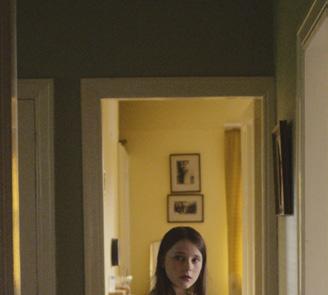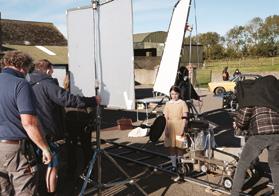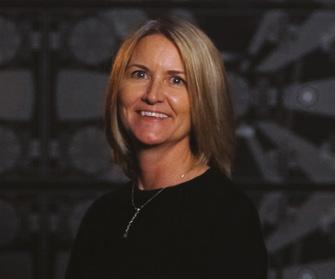
49 minute read
PRODUCTION NEWS
ASPEC’S SUSTAINABLE ROAD MAP
ASPEC (Association Of Studio & Production Equipment Companies) provides a crucial collective voice to camera, grip and lighting-hire companies, plus studio and production facilities. Here, ASPEC’s chair, Dana Harrison (director of operations at ARRI Rental UK) writes-in with an update.
“ASPEC has origins going back to the early 1980s. Originally it was represented by major, competing lighting rental and studio facility companies supplying the film, television and multi-media industries.
Prime movers at the time were Mr Lighting, Grip House and Lee Lighting, along with smaller, niche firms, such as Bell Lighting, On The Spot and Rainbow Lighting, names which have passed into the mists of time.
Initially, called the Lighting Contractors Association, its success as a representative
SUMOLIGHT INTRODUCES SUMOMAX LED LIGHT
Sumolight GmbH, known for its Sumospace+ and Sumosky products, has introduced the high-output, Sumomax LED light. With a distinctive hexagonal design, highlumen output and modular form factor, this 700W, 1800-15,000K, full-spectrum, RGBWW fixture is designed to serve and inspire creative lighting, performing as a keylight, hardlight, punchlight, spacelight or softlight.
The Sumomax retains a similar form factor to the Sumospace+, and its hexagonal profile measures 561 x 500 x 175mm / 22.1 x 19.7 x 6.9 inches. Fixtures can be arranged honeycomb-style to create unique patterns or shapes to suit the job. For enhanced lighting creativity, cells within the structure can be controlled as a group or individually.
Thanks to its “swoptic” module interchangeable optics, beams may be enhanced and directed from narrow 20° native up to super-wide 120° via clip-on optics. Intensity is fully-dimmable 100% to zero. Built-in effects include 0-30Hz shutter/strobe and automated programmes. For added control, the system works with an array of light shaping tools that transform it from a spacelight to softlight to a high intensity fixture.
Each fixture comes complete with internal power supply, on-fixture touch display panel and DMX/ RDM, ethernet, WiFi control ability. Its design and build offers silent passive cooling, and the Sumomax is IP65 rated. body, resulted in a decision to incorporate it as a vehicle to best represent the interests of its members, and so was born the Association Of Lighting & Studio Facility Companies Ltd. When one realises that the initial membership comprised of companies that were the fiercest of competitors, it reveals the determination and desire to work together.
Some of the association’s early successes include working with the Ministry Of Transport to achieve sensible and workable tachograph rules for the industry. A Crane Guidance document, the first of its kind, saw all member companies supplying camera cranes, working together to put in place a concise publication. This would go a long way in ensuring the safety of the camera crews and the production personnel working around them. This document has stood the test of time and has recently been updated to include all the new crane and remote heads currently in use throughout the film and television industry.
With an increasing membership, which went beyond lighting equipment, it was decided to rebrand the old association to reflect its current members, which now included rental companies specialising in camera, lenses, remote systems, and several other equipment types.
And so, the Association Of Studios & Production Equipment Companies (ASPEC) was born!
Throughout the period of both the old association and the new ASPEC, key people played an active role in committees set up by the Health & Safety Executive, which was originally set-up as the Broadcast Joint Advisory Committee (BJAC) and later became the Joint Advisory Committee for Entertainment (JACE). ASPEC also chaired the Film Broadcast & Multi-media Safety Group (FBM-M) subcommittee of the HSE over several years and was involved in various initiatives including Rental Guard, a global vehicle for tracking and tracing stolen equipment.
In 2002, ASPEC negotiated a formal labour agreement for the provision of gaffers, electricians and electricians to commercials following failed negotiations between the Electricians’ Union (AMICUS) and Production Companies Association (APA). This agreement is still in place today.
In recent years ASPEC gave up some of its independence in favour of becoming an association within PLASA (Professional Lighting & Sound Association). However, after a period, it was recognised, that PLASA better-represented the events industry and therefore, it was agreed that the two associations would split amicably, with ASPEC once again independent and representing its own unique market sector.
Fast forward to 2020, when Covid-19 hit our shores – a challenging and trying time for the whole of our industry. The members of ASPEC found themselves under a degree of pressure to re-open their businesses to production. It suddenly dawned on associations, representative bodies and other interested parties within the industry, that without camera, grip, lighting and ancillary equipment, facilities and studios, any return to work was near-impossible. Members began working immediately to create a ‘Return To Work’ strategy.
The aim was to reach a consensus amongst all members where an agreed and consistent approach was achieved when it came to pandemic guidelines, risk assessments, protocols, hygiene and sanitation. A successful ‘Return To Work’ strategy was achieved by 1st June 2020, when all member companies were able to reopen their doors with the confidence that they could provide a safe working environment for their employees, productions, and crew.
There was a realisation amongst the industry’s representative associations that the companies making-up the membership of ASPEC play a crucial role in the development, formulation and implementation of policies and strategies relating to the film, television and multimedia industries. With pride, the association can now rank itself amongst the decision makers within the industry, having been recognised and given stakeholder status for any future initiatives.
It goes without saying that all member companies were dealing with the fears and unknowns of Covid. It was a scary time. But the results of this experience created a strong unity amongst all members that honestly will outlive the memory of the pandemic.
With Covid protocols established across the industry, our members were able to get back to doing what they do best – successfully supplying to a booming industry in the UK – and it has resulted in many member companies reporting record-breaking business.
Looking over the horizon, the association has leant its support to member company initiatives, such as the Camera Technicians’ Apprenticeship Scheme, a fully-funded placement scheme for young leavers. With Barry Bassett (MD of VMI. TV) leading the cause, and in collaboration with ScreenSkills, LSA and Next Gen Skills Academy, they are looking to support the second intake late in 2022/2023. Have a look online at the Camera Prep Technician Apprenticeship (www.nextgenskillsacademy.com).
For many years, ASPEC member companies have been training young people within their organisations. Many of them are now successful freelance crew in the industry. Rental companies provide the best opportunity for young people to learn the tools of the trade and prepare them for a career in the industry. All members take great pride in seeing so many people come through their doors and spread their wings.
So what’s next on the agenda for 2022? Sustainability. ASPEC is looking at different ways to work collaboratively to make meaningful changes to the industry and the environment. This will include waste reduction, equipment life cycle and recycling, facility energy efficiencies and more. Watch this space!”
Consider joining ASPEC, visit https://aspec.website/joining-aspec

OUTSTANDING OPTICAL PERFORMANCE
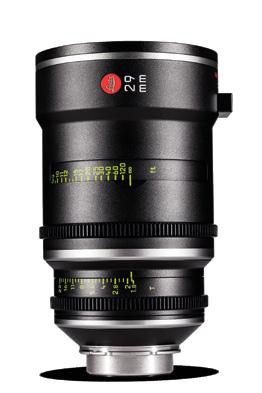
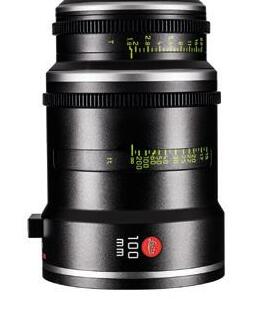
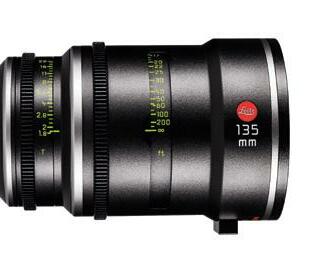

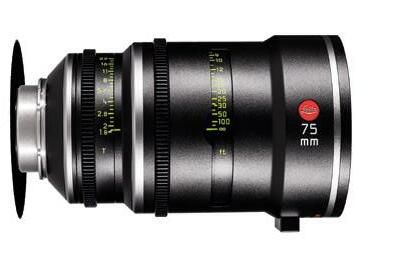
LEITZ PRIME
WWW.LEITZ-CINE.COM

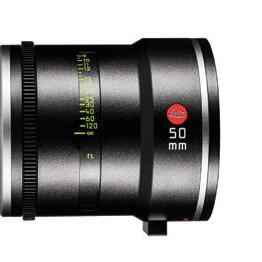
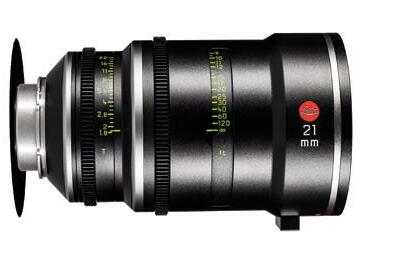
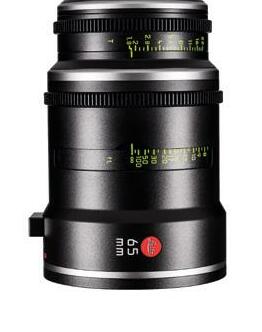
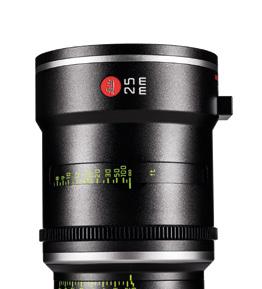
Ladd Observatory, Providence, Rhode Island on Saturday, 26 March 2022, 2:16PM
ASTRONOMICAL OBSERVATIONS
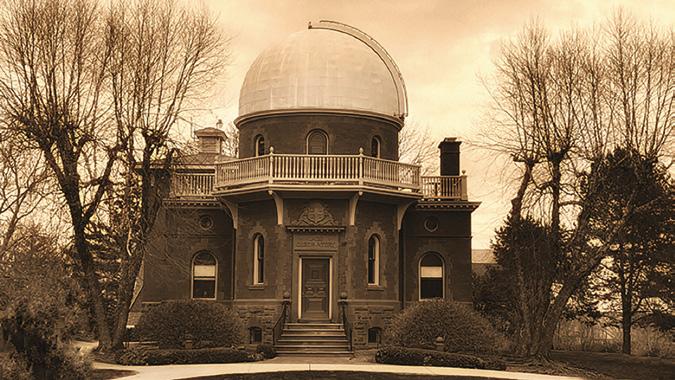
Ihad been wanting to make this photograph of the Ladd Observatory for the best part of 25 years. While shooting the feature Outside Providence (1999, dir. Michael Corrente) in – appropriately enough – Providence, Rhode Island, I used to drive past the corner of Hope and Doyle every day on my way to work. No matter the conditions, the dark building, crowned by the astronomical observation dome, always drew my attention. Maybe it was its long setback from the street and the greenery that surrounded it, but the obsession was certainly rooted in the past; I wouldn’t have been surprised to see Theodore Roosevelt, fresh from a daring expedition, bounding down the steps..
As is typical, the demands of the job kept me from going deeper and I’ve been sorry about that ever since. Once again finding myself in Providence – this time to shoot a pilot – I made my way to that intersection and realized that neither the building nor the feelings it evoked had changed.
I figured the moment had finally come to trip the shutter, so I did. The result represents exactly what I envisioned in 1997 and highlights the staying power of such random, low-simmering obsessions.
As special as the image is to me though, it carries little significance in the broader sense. Considering that Instagram alone uploads 95 million photographs a day – some of them very good, by the way – it’s meaningless! Would I have been foolish to imagine someone connecting with it? The thought never occurred to me. I took the photo for the joy of doing so; my satisfaction came from just being there. If the result goes no further than my personal archive it will all be the same to me.
But there’s another aspect to that motivation, and I believe it’s common to most cinematographers. We are obsessed by the notion of freezing a moment in time. This has nothing to do with the peripherals, i.e. the when, where and how of what we’re shooting. Instead, it reflects a drive to share things that can originate as easily in the pit of our chest as in our intellect.
Sometimes we don’t know why we execute our craft in a certain way beyond the conviction that ‘it felt right.’ How lucky we are to make that claim! This is a hopeful trait, one that’s life-affirming and filled with optimism.
The simple act of rolling our camera makes us witness to things that will never occur in the same way again. It also marks an instant in our lives, one we will have the privilege of revisiting should we so desire. If I could possess any superpower, it would be the ability to travel back-and-forth through time, while maintaining a contemporary sensibility. Watching a movie gets us close to that. Watching something we’ve personally shot gets us closer yet. Like hearing a song that was popular during childhood or projecting our imagination into the future, a later encounter with our own images can trigger a variety
of powerful emotions.
While taking a break from writing this piece, I caught half an hour of Michael Curtiz’s 1936 B&W effort, The Charge Of the Light Brigade (DP Sol Polito ASC). It’s a terrific ride in many ways and, while not quite lost to the ages, it has become as obscure as most other eighty-six year-old titles. In addition to seeing Errol Flynn at the top of his game, it’s bursting with Sol Polito ASC’s resplendent, #25 Red-filtered day\exteriors.
Apart from that, I couldn’t help but wonder what was going on at the time in the lives of the people who made the movie. I don’t suppose they were terribly different from any of us, save for the fashions and vernacular of their era. But keeping in mind that the audiences of 2122 might be inclined to judge us in the same knee-jerk fashion, it would be a disservice to think of them as old fashioned or somehow disadvantaged. What they did was incredibly sophisticated and survives as a document of their existence, just as we hope our work will for us.
This speaks to something else I’ve become more aware of over the years. I wish everyone would give it some thought. Haskell Wexler ASC put it in plain terms.
“When we’re working, it’s not just about the art and the mechanics and procedures. It’s really about the people you’re involved with and the effort you make together, the relationships you create. It’s learning about yourself, experiencing things and growing as a human being.”
If more of us took that to heart, the witnessing aspect of our work would hold an immeasurably stronger significance.
I’m always grateful that I get to do what I do, even if it’s only knocking out a snapshot with my cellphone camera. While I wouldn’t advise waiting 25 years to take a picture, the long delay between visits to the intersection of Hope and Doyle did give me time to think. The fire is still burning.
So, maybe somewhere down the line I’ll have a look at my photo of the Ladd Observatory and remember that I once stood before it with camera in hand, fully engaged in that moment. And that will make me happy.
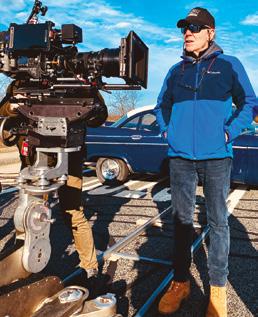
Euro Cine Expo
stand 208


Supplying the film and broadcast industry with the latest innovations in lighting and accessories since 1999
THE SHOOTISTS
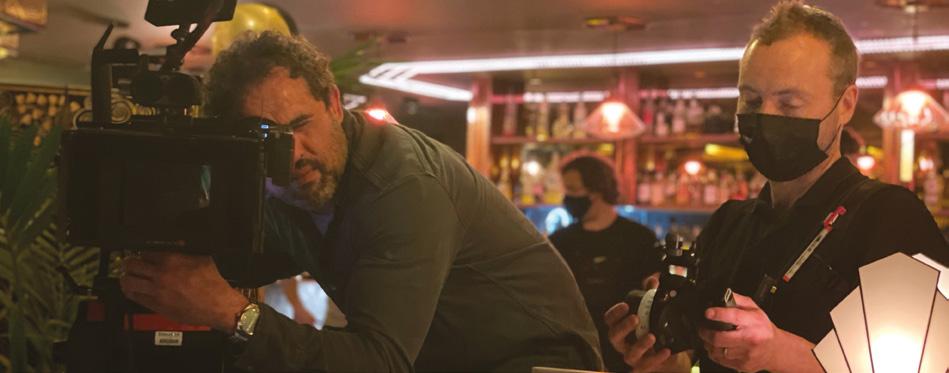
Our regular round up of who is shooting what and where
WORLDWIDE PRODUCTION ASSOCIATES:
Catherine Derry is prepping on The Great S3 for Starz. Mattias Nyberg BSC has started on The Elect with director Ben A. Williams, a 4-parter for House Productions/ITV. Stefan Yap is readying for the Sky Original feature Breaking Point with directors Max Giwa and Dania Pasquini. Stephen Murphy ISC BSC has completed principal photography on BBC’s Blue Lights with director Gilles Bannier, produced by Two Cities TV. Baz Irvine ISC BSC continues principal photography on Apple TV+’s

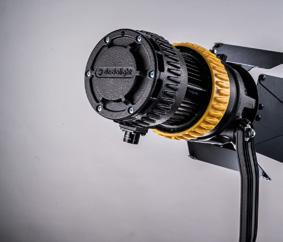
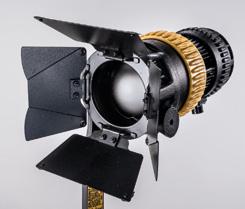
Invasion block 2 with director Brad Anderson. Ed Moore BSC has graded The Birth Of Daniel F. Harris with director Alex Winckler for Clerkenwell Films/ C4. Angus Hudson BSC shot pickups on Netflix’s I Used To Be Famous with director Eddie Sternberg. PJ Dillon ISC ASC and Richard Donnelly continue principal photography on Netflix’s Straight Shooter. Tony Slater Ling BSC is lighting The Full Monty series for Disney+ with director Andrew Chaplin, in Manchester and Sheffield. Arthur Mulhern has started on BBC/Sister Pictures’ Better, with director Jonathan Brough. Anna Patarakina FSF is in Hamburg, prepping the feature The Tutor, with director Alice Troughton, for Bleecker Street. Manoel Ferreira SASC is shooting The Ex-Wife for Paramount+ in Budapest with director Brian O’Malley. Joel Devlin is lighting Project IV for Netflix with director Marco Kreuzpaintner. Vanessa Whyte has begun principal photography Ted Lasso S3 for AppleTV+ with director Matt Lipsey. Katie Swain shot 2nd unit photography on Warner Bros’ Batgirl in Glasgow. Ruairi O’Brien ISC has wrapped on the feature Jericho Ridge with director Will Gilbey for Dog Eat Dog. Paul Morris shot the documentary Explorer: Endurance in Antarctica for Disney+/National Geographic/ ABC News/Little Dot Studios. Matthew J. Smith wrapped a collaborative spot for Deliveroo in London and Los Angeles with Lucky Strike director Chris Dooley. Benjamin Todd lit a spot for Lydia in Bangkok with Birth Paris directing duo Zhang and Knight. Tibor Dingelstad NSC lit a spot for T-Mobile with Cake director Nina Aldering in Sofia. Marc Gómez del Moral shot Dua Lipa’s latest promo with OB Management director Emil Nava. Matthew Fox filmed spots for Asda with director Tiny Bullet via Flipt, and Sainsbury’s for You Are Here and The Apiary. James Henry shot with January Productions’ director Thomas Lagrange for Gucci. Nathalie Pitters lit an ad for Peloton with Whisper director Jessie Ayles. Matthew Emvin Taylor lit a promo in Barcelona for David Guetta and Becky Hill with Noir director Micahel Holyk. Dan Holland was in Mexico for a Rice-A-Roni TVC with Slash Dynamic director AJ Columb. Alexandre Jamin lit Nissan ad with director Franck Kinanga across Barcelona and Morocco.

UNITED AGENTS: Remi Adefarasin BSC
has wrapped on Secret Invasion for Marvel Studios. Søren Bay DFF is shooting Darkness: Those Who Kill S3 with director Jesper W. Nielsen for Miso Film/ Acorn TV. John Lee BSC is shooting Anansi Boys with director Jermain Julien for Amazon. Philippe Kress DFF has grading Fate: The Winx Saga S2 with director Sallie Aprahamian for Archery Pictures/

Netflix. Mark Nutkins is grading The Split S3 with director Dee Koppang O’Leary for Sister Pictures. Donna Wade shot the short, The Silent Canary, with director Vera Graziadei for Luminous Arts Productions. Danny Cohen BSC is prepping Real Tigers S2 for Apple TV. Damian Paul Daniel is working on a new feature-doc with Stefan Stuckert. David Higgs BSC is filming Shadow And Bone for Netflix in Hungary. Matt Lewis wrapped on Philip Barantini’s Accused and started prepping for World Productions/ITV’s Malpractice. Laurie Rose BSC is lighting Wool for Apple TV. John Sorapure is working on Warner Bros’ Barbie as second unit director/DP. Simon Tindall is prepping Lawrence Gough’s episodes of The Gold. Ollie Downey BSC is prepping Sister Pictures’ Pack Of Lies. Laurens De Geyter SBC is shooting Professor T S2. Sam Heasman is prepping Wolf. David Rom has started on Ted Lasso S3 and Simon Stolland is grading Adam Deacon’s feature Sumotherhood. Sam Chiplin has wrapped on The Lost Flowers Of Alice Hart with director Glendyn Ivin. Charlotte Bruus Christensen DFF ASC is shooting Retreat for FX with Britt Marling and Zal Batmanglij. Anton Mertens SBC is lighting a Netflix film in Belgium. Milos Moore is shooting Netflix’s You S4. Neus Ollé AEC BSC is shooting commercials. David Raedeker BSC is lighting Best Interests for BBC1 with director Michael Keillor. Niels Reedtz Johansen has begun prep for a TV series in Denmark. Kate Reid BSC is lighting the last block of Great Expectations with director Samira Radsi for BBC1/FX Networks. Ed Rutherford is with Lewis Arnold in Leeds shooting ITV’s The Long Shadow. Anna Valdez Hanks is shooting the second block of Culprits for director Claire Oakley and Disney+. Ben Wheeler has begun prep in Hungary for HBO’s Untouchable with director Christopher Smith. Barry Ackroyd BSC is lighting The Old Guard 2 in Rome for director Victoria Mahoney. Philipp Blaubach is in Europe shooting Culprits for Jay Blakeson. Daniel Bronks shot a First Bank commercial in Slovenia for directors UBIK, via 1st Avenue Machine. Simon Chaudoir was also in Slovenia shooting a Monster.com spot with director Benji Weinstein for Smuggler LA. Danny Cohen lit a Money Supermarket TVC for director John Madden through Pulse. Sara Deane has wrapped on Whitstable Pearl 2 with director Jon Jones. Tim Maurice-Jones BSC framed an Aldi ad for Vaughan Arnell in Bulgaria via Merman. Matias Penachino shot an Asahi ad through Canada. Sebastian Pfaffenbichler AAC lit a Honda commercial for director Fernando Livschitz, via The Mill. Simon Richards lit an Ocado commercial for director Gus Filgate through Bite, and a Santander TVC with Declan Lowney at Merman. Joost Van Gelder lensed an Army commercial for director Nicolai Fuglsig in Cyprus, via MJZ. Haris Zambarloukos BSC GSC is shooting The Meg 2 for director Ben Wheatley. Daniel Vilar is working on Heart Of Stone as second unit DP.
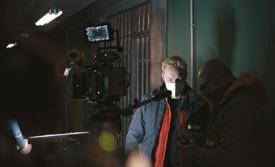
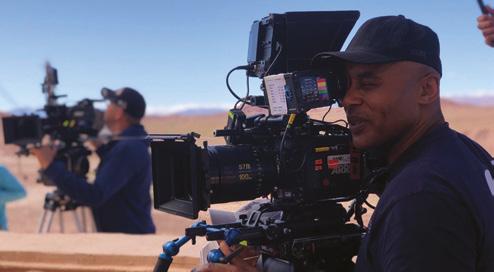
Opposite: (top clockwise) – Sergio Delgado on The Pact S2, with 1st AC Elliot Hale (photo by Dan Edwards); Ruairi O’Brien ISC on the set of Jericho Ridge in Kosovo; Stephen Murphy ISC BSC scouting for Atlanta S3 with director Hiro Murai; and Ruairi O’Brien ISC on Jericho Ridge again. This page: (descending) Sean Francis in Morocco lighting Queen Cleopatra for Nutopia’s African Queens series; and Zoe GoodwinStuart on The Rising(photo by Vish Sharma); James Frater in South Africa shooting Invasion for Apple TV.
Jamie Donoghue. Ole Bratt Birkeland BSC is prepping Never Let Me Go pilot with Marc Munden. Caroline Bridges is shooting the TV series Commonality, produced by Donna Molloy. Jordan Buck has been shooting with directors David Mellor, Kevin Castanheira and Phoebe Arnstein. Miguel Carmenes lit promos for Robin Knightz and did further days on an F1 documentary. Chris Clarke has wrapped on the elements/VFX unit of Havoc, directed by Gareth Evans. Oliver Curtis BSC is prepping on Debutante, directed by Susannah White. Ben Davis BSC is shooting JC Chandor’s Kraven The Hunter. Anthony Dod Mantle DFF BSC ASC is shooting for Amazon Prime with Jeff Low at Biscuit. Adam Etherington is working on Project IV. Kit Fraser has graded I Came By, directed by Babak Anvari. Cinders Forshaw BSC is shooting on Vera S12. Sam Goldie has been shooting commercials with Sam Barker. Catherine Goldschmidt is prepping block 2 of The Ballad Of Renegade Nell with Amanda Brotchie. Eric Kress is shooting the new TV series The Turkish Detective, directed by Niels Arden. John Mathieson BSC is shooting a feature called The Shepherd, based on Frederick Forsyth’s novella, directed by Iain Softley. Seamus McGarvey BSC ASC has started on Angelina Jolie’s Without Blood. Bani Mendy has graded the TV comedy Pru, directed by Teddy Nygh. Andreas Neo is prepping Motive, a feature directed by Anu Menon, developed with the BFI. Mark Patten BSC is shooting Mechanical with Morten Tylden. Stephan Pehrsson BSC is shooting Red Book Ep1 with Toby Haynes. Tat Radcliffe BSC is lighting Kaos with Georgi Banks-Davis. James Rhodes has been shooting live events – Wolf Alice with director Stroma Cairns, Liam Gallagher with Paul Dugdal, and Muse with Liccy Burke Wild. Ashley Rowe BSC has finished Seize Them, directed by Curtis Vowell. Martin Ruhe ASC is on George Clooney’s The Boys In The Boat. Alan Stewart BSC is lighting Our Man From Jersey with Julian Farino. Carl Sundberg is prepping Halo 2. David Ungaro AFC is lensing Black Flies with Jean-Stéphane Sauvaire. Erik Wilson BSC is filming Michael Gracey’s Better Man.
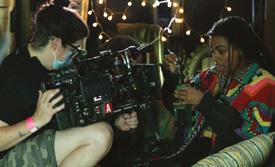
MCKINNEY MACARTNEY MANAGEMENT:
Ben Butler and Alessandra Scherillo have been shooting commercials. Denis Crossan BSC is prepping Love Box for BBC with Daniel Kleinman directing. Sergio Delgado continues on BBC’s The Pact S2 with director Nicola Volavka. Michael Filocamo is working on You And Me for ITV. Jean Philippe Gossart AFC is shooting Netflix’s Treason, with Sarah O’Gorman directing. Steve Lawes is filming Beacon 23 for AMC in Toronto. David Luther shot on Wool for Apple+ TV and additional photography for Netflix’s The Witcher prequel, The Lark. Dale Elena McCready NZCS is shooting on The Witcher S3. Sam McCurdy BSC is filming Shogun in Vancouver for FX. Andy McDonnell is lighting Happy Valley S3 for BBC. John Pardue BSC is shooting the feature Unit 324 in The Cayman Islands with Andy Tennant directing. Mike Spragg BSC continues on Pitch Perfect: Bumper In Berlin for NBC Universal.
SARA PUTT ASSOCIATES: Death Of England: Face To Face that Sashi Kissoon worked on last



NEO ballast serves all dedolight LED 20 to 90 Watt. Mono-, bicolour, UV, IR, battery or AC operation Dimming smooth to 0.2% High Speed Video mode up to 50.000 fps All DMX on board (8/16 bit) Option wireless
year was BAFTA-nominated for Best Single Drama. David Mackie has graded Mammoth Screen’s Tom Jones, and worked on Wonka second unit. Yinka Edward is working on The Meg 2. Jan Jonaues working on the new series of Vera. Emily Almond Barr is in Dundee on a documentary for C4. Sean Francis was in Morocco lighting Queen Cleopatra for Nutopia’s African Queens. Andrei Austin ACO Associate BSC SOC is in Scotland working on Neil Gaiman’s Anansi Boys for Endor Productions/Amazon. Andrew Bainbridge ACO sis Steadicam dailies on Ted Lasso and Riches. Jon Beacham ACO operated on A Town Called Malice for Vertigo Films/Sky. Danny Bishop ACO Associate BSC SOC did dailies for various projects including for Disney. Ed Clark ACO is confirmed on The Red Book – Demon 79 as A-camera/Steadicam. James Frater ACO SOC is in South Africa for the next instalment of Invasion for Apple TV. Ilana Garrard ACO has started on The Gold for BBC/Paramount+. Zoe Goodwin-Stuart ACO is B-camera on The Witcher. James Leigh ACO in Cornwall on the new series of Doc Martin. Will Lyte ACO has started on The Greatest Days. Vince McGahon ACO Associate BSC shot pick-ups on The Crown. Julian Morson ACO Associate BSC GBCT is operating on Kraven The Hunter. Aga

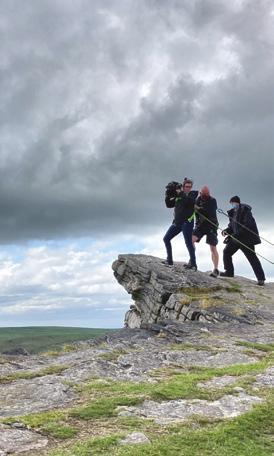
Szeliga ACO worked on a commercial with DP Tat Radcliffe, and did dailies on Great Expectations. Tom Walden Associate ACO is confirmed on The Ballad Of Renegade Nell for Disney. Rick Woollard operated on a Google spot for Partizan and a Lucky Strike project with DP Callan Green.
WIZZO & CO: Congratulations to Oli Russell who received a BAFTA nomination for his work on Sex Education S3. He is now working with director Ben Taylor on Disney +’s The Battle Of Renegade Nell. Patrick Meller is shooting I Hate Suzie S2, directed by Dawn Shadforth. Aaron Reid continues to shoot A Town Called Malice. Susanne Salavati continues on Flatshare alongside Chloe Wickes. Sverre Sørdal FNF has graded Malou Reymann’s feature Defekt. Hamish Anderson is prepping a feature, and Chas Appeti has graded an Amazon Original Jungle. Gary Shaw has done the DI on His Dark Materials S3. Luke Bryant has graded Neil Marshall’s The Lair and the feature The Last Kingdom. Tim Sidell is prepping Chemistry Of Death. Antonio Paladino is fliming a feature directed by James Marsh. Molly Manning Walker has graded Charlotte Regan’s feature Scrapper. Charlie Goodger is prepping Silent Witness alongside director Max Myers. Ryan Kernaghan in readying for The Hunt For Raoul Moat, directed by Gareth Bryn. Steven Ferguson is prepping an Amazon Original embargoed drama. Franklin Dow continues on an embargoed documentary project. Nicola Daley ACS shoot on The Handmaid’s Tale. Karl Oskarsson IKS has graded Netflix’s Man Vs. Bee. Nick Dance BSC is prepping Dr Who. Ben Magahy continues on Mary McCartney’s documentary. Dan Stafford Clark has graded his episodes of Extraordinary, Matthias Pilz is shooting the feature Excursion, directed by Una Gunjak. Adam Gillham has completed the grade on The Man Who Fell to Earth. Carmen Pellon Brussosa shot the short Path To Ecstasy, directed by Abdullah Khan. David Procter shot with Man Vs. Machine, and Murren Tullet with Jonnie Malachi. Peter James has shot with Will Stud, Arran Green with Meeks and Frost, and Theo Garland with Tom Speers. Joe Douglas has lit for Björn Rühmann, Will Bex for Scott Lyon and Fede Alfonzo for Paul Butterworth.
INTRINSIC: in features, Bebe Dierken has finished Dr Jeckyll. James Mather ISC shot additional photography for The Last Rifleman, and is prepping on Kin. Ciaran Kavanagh continues on Charmed in Canada. Rasmus Arrildt DFF continues on Wolf. Nic Lawson is working on Outlander. Tom Hines shot additional photography on Riches. Andrew Johnson and spent time on Casualty and Eastenders. Lynda Hall shot a documentary on Angela Merkel. Simon Hawken FNF shot an enormous corporate for Qatar Airways across five continents. Gabi
Norland, Martin Roach, Dave Miller, Gareth
Munden and Lynda Hall have all been busy on commercials, trailers, idents and corporates.
ECHO ARTISTS: Stuart Bentley BSC is shooting BBC1 drama The Gold with director Aneil Karia. Nadim Carlsen DFF is shooting episodes of HBO/ Sony series The Last Of Us, directed by Ali Abassi. Carlos Catalan is shooting episodes of Rain Dogs for HBO/BBC, with directors Richard Laxton and Jennifer Perrot. Federico Cesca is shooting on the new season of Top Boy for Netflix/Cowboy Films. Rachel Clark has graded on ITV/Apple TV+’s four-part series Without Sin with director Al Mackay. Andrew Commis ACS is shooting Robert Connolly’s feature Force Of Nature for Made Up Stories. Ruben Woodin Dechamps is lighting Apple TV+ documentary Whatnot with director Jerry Rothwell. Edgar Dubrovskiy has wrapped on Amazon/ITN’s documentary The Disappearance Of Patricia Hall, directed by Sam Hobkinson. Bonnie Elliott ACS shot Cate Shortland’s series Three Women. David Gallego, ADFC is shooting the Netflix feature Rebel Ridge with director Jeremy Saulnier. Lachlan Milne ACS NZCS ASC is shooting Alma Har’el’s Apple TV+ series Lady In The Lake. Lorena Pagès is shooting the feature Greatest Days with director Coky Giedroyc. Will Pugh is lensing the documentary Unlikely Heroes, directed by Addison O’Dea. Korsshan Schlauer has wrapped on episodes of The Pact II for BBC/Lionsgate/Little Door Productions. Evelin van Rei has graded the Apple TV+ series Bad Sisters with director Dearbhla Walsh. Maria Von Hausswolff is shooting Annie Baker’s upcoming feature. Sean Price Williams is directing and shooting his own feature. Nicolas Canniccioni,
David Chizallet AFC, Nick Cooke, Charlie Herranz, Jo Jo Lam, Macgregor, Anders Malmberg, Christopher Miles, Michael Paleodimos, Noël Schoolderman, Bartosz Swiniarski, Niels Thastum DFF, Chloë
Thomson BSC, and Felix Wiedemann BSC have all been shooting commercials.
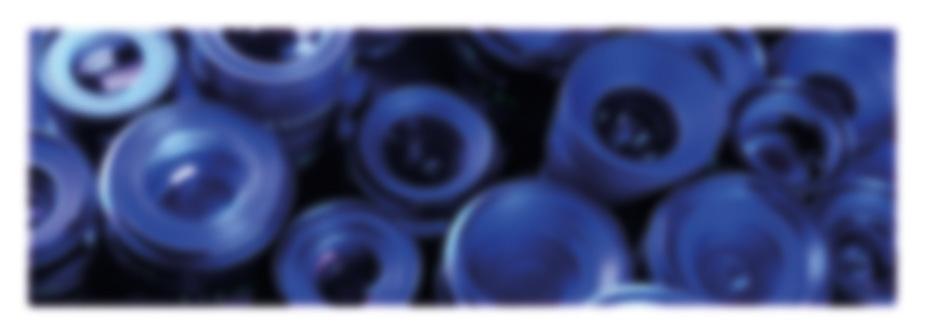
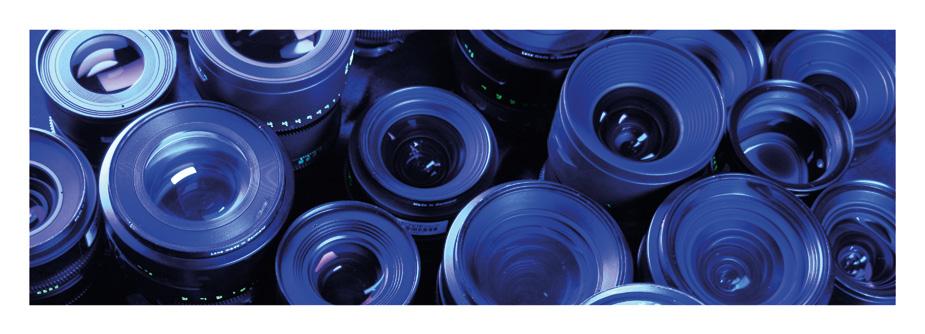

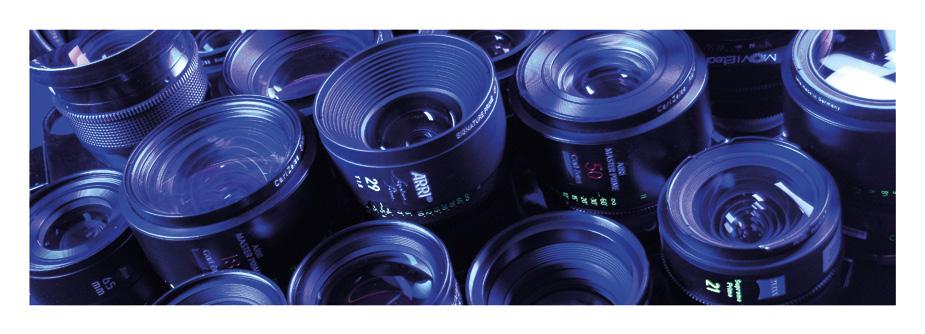

PRINCESTONE: Of the agency’s camera/Steadicam operators… Junior Agyeman ACO has finished on Sky Studios’ pilot, Both Sides Now, for DP Nick Martin. Simon Baker ACO is filming on The Crown S5, directed by Benjamin Carron, and shooting dailies on Napoleon, the Apple TV+ drama directed by Ridley Scott, with DP Dariusz Wolski ASC. Michael Carstensen ACO is working with DP Scott Winig on The Witcher at Longcross Studios. Matt Fisher ACO is on In the Land Of Saints & Sinners, a feature starring Liam Neeson and Ciaran Hinds, with DP Tom Stern ASC AFC, for director Robert Lorenz, shooting in Donegal. Rob Hart ACO is on Rain Dogs in Bristol, with DPs Carlos Catalan and Wojciech Szepel, and directors Richard Laxton and Jenifer Perrott. Tony Jackson ACO has been shooting dailies on Culprit as well as on Wool. Tony Kay ACO is shooting camera, Steadicam and Trinity on Invasion – Kanji S2, an Apple TV+ fantasy series, with DP Baz Irvine BSC ISC and director Brad Anderson in London. James Layton ACO is shooting on Wool with DPS Mark Patten BSC and David Luther. Nic Milner ACO is filming The Continental, directed by Albert Hughes for Lionsgate Television. Dan Nightingale ACO recently finished shooting in Bristol on Sid Gentle/BBC/ HBO series Rain Dogs with DP Carlos Catalan, and is now in preproduction with DP Sam Care on Nolly, starring Helena Bonham Carter, directed by Pater Hoar.
Peter Robertson Associate
BSC ACO is shooting on the thriller Apartment 7A, with DP Arnau Valls Colomer and director Natalie Erika James. Diego Rodriguez is the DP on Save Our Squad for Twenty Twenty Television and Disney+, following
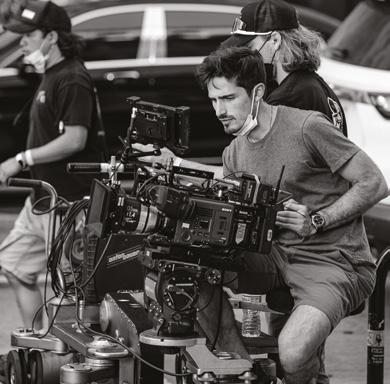
Opposite: (l) Edgar Dubrovskiy’s Ukraine Appeal Ad; and Zoe Goodwin-Stuart on The Rising (photo by Vish Sharma). This page: (top clockwise) – Ravenna Tran DP-ing on a short with the Royal Academy Of Dramatic Arts; DP Gaul Porat; and DP Sophie Gohr.
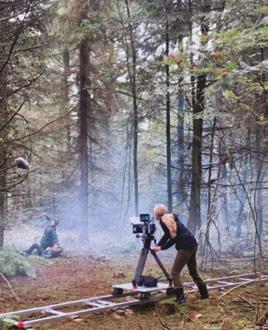
David Beckham as he returns to the East London football pitches where he played as a child. Joe Russell ACO is filming on Netflix’s series The Diplomat with director Simon Cellan Jones and DP Julian Court BSC. Sean Savage Associate BSC ACO SOC is on Netflix’s sci-fi blockbuster Straight Shooter, with DPs Jonathan Freeman ASC and PJ Dillon ISC ASC, and directors Derek Tsang, Minkie Spiro, Andrew Stanton and Jeremy Podeswa. Fabrizio Sciarra SOC Associate BSC GBCT ACO has finished on Wednesday, the live-action series version of The Addams Family, directed by Tim Burton, and is now shooting Outlander S7 in Scotland with DP Nic Lawson. Peter Wignall did additional photography on Argylle, directed by Matthew Vaughn, starring Henry Cavill, shot by DP George Richmond BSC. Tom Wilkinson ACO has finished on the next series Amazon Studios’ action thriller Tom Clancy’s Jack Ryan for, with DP Richard Rutowski ASC.
MYMANAGEMENT: welcomes Sveta Aparina, Ravenna Tran and Minka Farthing-Kohl to its roster. Sveta is a cinematographer from Kyiv, Ukraine, who works on commercials, music videos, shorts and documentaries, and has a distinctive style, finding her inspiration in film photography. She has recently worked on Zalando in Berlin with director Laura Vifer, though 27km Entertainment. Minka recently lensed two features, Concrete Cowboys, starring Idris Elba, which premiered at TIFF and is available on Netflix, and The Nowhere Inn, written by and starring St. Vincent and Carrie Brownstein, which premiered at Sundance and is distributed by IFC. Most recently he was the DC unit DP
. . . A new chapter begins
This page: (top clockwise) – Stuart Dryburgh ACS NZCS on a Mexican Avocados TVC; DP Minka Farthing-Kohl; DP Sveta Aparina; DP Jon Chema shooting a commercial on 35mm film for director Leigh Powis; Ekkehart Pollack on a Nissan shoot in Bangkok; and Lee Thomas in Qatar filming for FIFA.
for Adam McKay’s Don’t Look Up. Ravenna is a Chinese-Vietnamese American DP, filmmaker and artist, who hails from a successful career in illustration. She specialises in imagery that provokes emotional responses and shoots her own indies about the lives/stories of LGBTQ folks and people of colour. Her short, And Then, won the Audience Award for at Outfest. Adric Watson joined forces with director Ahmed Hussein on an Anti Drugs TVC with Beautiful Productions, and with MY Accomplice director Ewen Spence for Diesel. Allison Anderson was in LA with Michael Johnson for Beyond Meat, and teamed-up with director Jared Hogan on Nike Mother’s Day. Arnaud Carney shot for L’Oreal in Paris, working alongside Phantasm director Masha Kondakova. Chris Dodds lit for Just So director Zak Harney on an M&S ad, and NSPCC Helpline with Fresh Film director Harry George Hall. Craig Dean Devine shot Sneakerheads with Simon Neal at Roughcut TV. Daisy Zhou is on maternity leave. Darran Tiernan ISC continues filming HBO’s Perry Mason S2. David Lanzenberg format Anamorphic on ARRI Alexa LF with the brand-new ALFA lenses. Pete Konczal lensed for Premiere Heure director Barnaby Roper on Lancome, and BMW with director Jonny Mass at Radical Media. Paul O’Callaghan was in Croatia with Al Clark for Honda, and then in Germany shooting a Sky doc with Raw TV and director
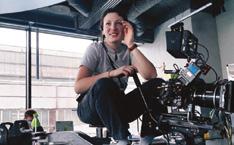


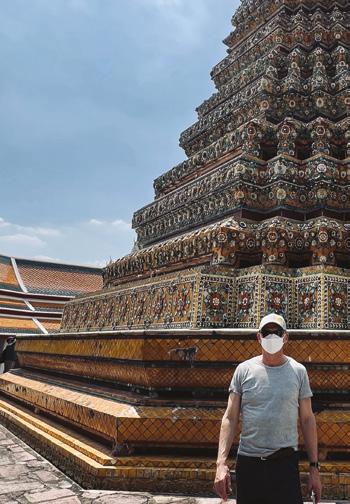
is shooting with director Tate Taylor in LA on Mrs American Pie, starring Laura Dern and Kristen Wiig. Deon van Zyl shot with New Land director Emanuele Soffe on a couple of music videos, and lit a short film in Ramsgate. Dominic Bartels continues shooting Chanel with Spring Studios’ director Mattias Pettersson. Issac Bauman wrapped on The Queen Mary with director Gary Shore, and is prepping on Loki S2 for Disney. Todd Martin shot a Gensis car ad in LA with director Matvey Fiks via Czar. Tómas Tómasson wrapped on the TV series The Octet in Cairo, directed by Ahmed Medhat, and has been in Iceland filming True North. Todd Banhazl SOC shot Dior J’Adore with Steven Kid at Boogie Nights. Sy Turnbull lensed a TVC for Kwikifit with Girl & Bear director Zar Ravi. Stuart Dryburgh NXZCS ASC has been on Paycom with Assembly director Chris Bean in NYC, and lensed the short film Khar with director Samin in Kent. Robbie Ryan ISC BSC has been working on McQueen with Prettybird with director Sophie Muller in New York. Pieter Vermeer was in Mexico filming Duracell with director Roman Coppola from The Directors Bureau. Petra Korner AAC has wrapped on Shadow And Bone S2 for Netflix/21 Lapse in Budapest, shooting large Gareth Johnstone. Nicolaj Bruel DFF has graded The Hanging Sun with director Franscesco Carrozini. Max Witting headed-off to Saudi Arabia for the featuredoc Her Story with director Hannah Berry George. Lee Thomas was in Doha, Qatar, for the FIFA World Cup Draw with director Jacob Mackay. Jon Chema shot in NYC with Stink director Douglas Berndart for Arlo Parks. Jallo Faber FSF lensed for Alpha Beer in Greece with Sunne Sorensen at Avion Films. Ian Forbes graded the feature In The Deep with director Kate Cox, before flying to Bucharest to lens on Persona with Film Deluxe director Ian Robertson. Gaul Porat shot a Venus campaign in Mexico with Stept director Courtney Yates. Filip Marek worked on a short with director Filip Engstrom in Prague. Ekkehart Pollack lensed VW Cinemascope, in Serbia with Rattling Stick directors AirCastle.

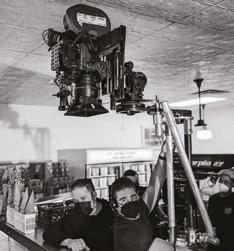
Photography by Lucia Faraig

Nuria Roldós has been working with director Marc Recha on Wild Road. The entire production was filmed in the canton known as La Cerdanya. The mountains, forests, luxury estates, the Segre river and its tributaries, the roads, the little villages and the aerodrome were all a large open-air set.
Photograph by Ana Stanič
We are extremely proud to have supported Director of Photography John Mathieson BSC, Gaffer Chuck Finch, Rigging Gaffer Tommy Finch, Best Boys Jack Ridout and Richard Merrell and the entire Crew on Doctor Strange in the Multiverse of Madness.
MBS Equipment Company Lakeside Road, Colnbrook, Slough, Berkshire SL3 0EL +44 (0) 1753 987 888 mbseco.uk
BE DAZZLED
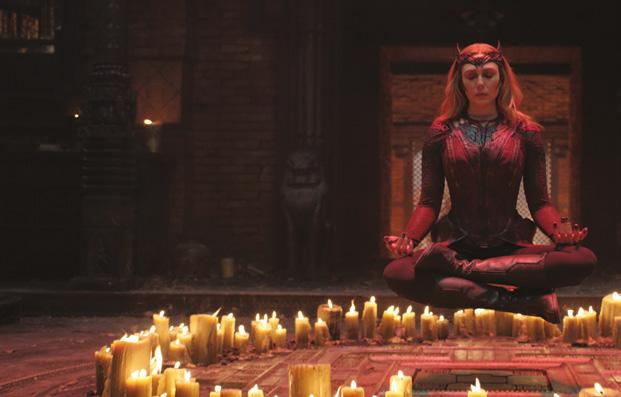
By Darek Kuźma
British cinematographer John Mathieson BSC teamed-up with director Sam Raimi for Doctor Strange In The Multiverse Of Madness and made his hypnotic mark on the ever-growing Marvel Cinematic Universe.
Dr Stephen Strange – a key player in Phase Four of the Marvel Cinematic Universe (MCU) – rather shockingly dies in the prologue of Doctor Strange In The Multiverse Of Madness. The trick is, he is not the Strange we know, but a version of Strange in an alternate universe. As our Doctor Strange tries to protect naïve, multiverse-hopping America Chavez from ex-Avenger Scarlet Witch’s grim fixation, he confronts, and combats, different versions of himself.
The filmmakers wanted to make this ‘what if…?’ concept as dazzling, dramatic and cinematic as possible. And they succeeded. The Marvel sequel to Doctor Strange (2016, dir. Scott Derrickson, DP Ben Davis BSC), crossed $550 million mark at the global box office in just in nine days after its release.
Having shot Gladiator (2000), The Phantom Of The Opera (2004), Kingdom Of Heaven (2005), X-Men: First Class (2011) and Logan (2017), to name just a few, Mathieson is no stranger to grand visual spectacles, and he happily accepted the offer to join the ranks of MCU cinematographers, and to find himself working with Raimi.
“I liked the idea of doing a horror movie, to follow familiar characters through the looking-glass into uncharted universes, to tap into their fears, hopes and regrets,” he asserts. “I was originally signed by Scott Derrickson, but when he left the production they wanted to keep the rest of us on board. What happened next wasn’t ideal, but I’m happy that I stayed.”
What he means is the troubled schedule that affected the production. Due to the pandemic, shooting was postponed from May to November 2020, then halted between January and March 2021 owing to the UK’s surge of Covid cases. More than six months after they wrapped, Marvel then ordered six weeks of reshoots.
“We were going to shoot in wild locations, which is what I crave in this job, yet we couldn’t go to Iceland, Norway or Nepal. We mostly stayed at Longcross Studios, with 850 people going in and out and getting tested every day. This was a madness that I really did not expect.”
In retrospect, he says the most laborious aspect was prepping the film’s variegated look. “We followed what others had done before us, but the fact that our characters jump around different universes, hunted by the Scarlet Witch, allowed us to put our mark on the visual storytelling,” he says.
“What’s the sky like? Is it blue? How green is the foliage? Is everything slightly different, or very different? I really didn’t want to overdo the colours, and make it look like the floor in Saturday Night Fever. Yeah, this is madness, but within that each of the universes has its own feel.
“We did tests with cameras and lenses, shooting digital and film, which Sam very much liked, using various lamps, filters and gels, taking colour in and out. I often referenced the work of the American painter and illustrator Maxfield Parrish (1870 – 1966): he was not afraid of odd colours, yet what he painted seemed real, even if he used blues or purples along with reds and ambers for sunsets. The idea was to make the film look less VFX-heavy than it was. A mix of old-style horror, with strong shadow and shape, and ‘colour’ noir.”
Mathieson decided to shoot Doctor Strange In The Multiverse Of Madness using a Panavision combo of DXL2 IMAX-certified cameras and Sphero 65mm lenses (14mm to 180mm). In addition to the DXL2s, he also had one Red DSMC2 Monstro VV, and used a variety of zooms – Primo 70mm Zooms (28-80mm 4PZW 70 series, 70-185mm 4PZM 70 series), Elite Zoom (120-520mm with 2x extender) and Angénieux Optimo FF (36-435mm). All of this equipment, especially the zooms, were fundamental to make the diversified look of the multiverse seem believable and give Raimi the space to do what he is best at.
“Sam’s a horror guy,” Mathieson exclaims, “he’s into strong framing, wide angles, moving the camera.

We did tilts, vertigo effects, camera speed changes, POV shots, chase sequence with the camera going right into the eye of a bloodied character and pulling out fast. Unnerving stuff, that puts you out of your comfort zone.
“With the amount of VFX in the film – massive squids, third eyes in human heads, power coming out of fists and eyes – it had to be digital. Often, Strange’s cape isn’t real. They would have to perfectly align everything on-set each and every time, then map a digital cape into a deregistered grainy film image.”
Despite the VFX-iness, Mathieson tried to shoot as much in-camera as was feasible.
“Sam is not afraid of reusing the same sets. We had this horror chase in a tunnel dripping with water, but the set was only 20m long. Many would diversify the shots in post, but we kept changing lightbulbs and adding shadows, and it worked!” he reveals.
Sam’s a horror guy… he’s into unnerving stuff that puts you out of your comfort zone

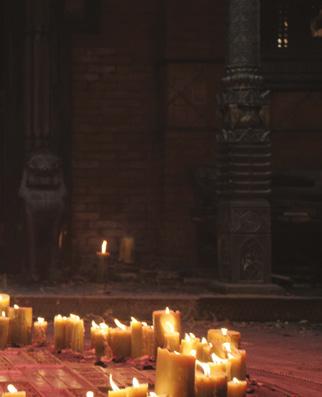
Images: Photos courtesy of Marvel Studios. ©Marvel Studios 2022. All Rights Reserved.
“Or, we were shooting an orchard on a farm in Somerset, but the spring flowers were slow. So we wired silk cherry blossom flowers on trees and used every inch of that location.”
Though the crew remained mostly at Longcross, they shot at several locations: Freemasons’ Hall and Royal Institute Of British Architects in London, and the aforementioned Burrow Hill Cider Farm in the West Country.
Mathieson too tried to play with the physicality of things as much as he could, assisted by his gaffer, Chuck Finch, and lighting desk operators, by controlling a myriad of light sources. The lighting package on the film was provided by MBS Equipment Co. UK.
“One of our big sets was Kamar-Taj, the Himalayan home of Strange’s order. It’s always difficult to light exteriors on-stage, and here we had a big battle when the Scarlet Witch attacks the monks,” he says.
“I had over a thousand 1K Par cans in the sky as backlight, they deliver 8.5 at 30ft at 400ASA. As the Witch comes with this sinister cloud of blackness, we pulled-up 12x12ft blacks in front of Dinos, dimmed the Par cans, leaving only spacelights. You can feel the shadow physically moving through the set, sucking out the warm light, leaving a gloomy blue-cold look.”
Mathieson and Finch used a similar approach to a climactic scene at the top of the ancient Mt Wundagore where the Scarlet Witch, Chavez and a zombified Strange, face each other in a surreal duel.
“The mountain temple was built on-stage, but we didn’t want it to feel greenscreen. We had SoftSuns to get real shadow and shape, and then, at the right moment, pulled big blacks in front of them to get a sense that the world ends. And it does, in a way.”
He complimented this through an extensive use of gels: Pale Blue, Flame Red, Red and Primary on Mt Wundagore, using Cardbox Amber, Straw and Wheat directly, plus Mist Blue ambience, on the Kamar-Taj set.
Yet, the biggest set built at Longcross was a chunk of New York, measuring some 400m in length, 85m in width, with six cross streets.
“We shot day exteriors there and the fight with a squid thing,” Mathieson recalls. “I had SoftSuns, ARRI 18Kw HMIs, ARRI 12Kw HMI Pars to shape the streets with that iconic New York shadow, as everything is blanked by the monolithic buildings.” For the different moods of the New York Sanctum, one existing in our world, the other in a post-apocalyptic universe, Mathieson again enhanced his lighting with gels. For our world Sanctum it was Peacock Blue, 101 Yellow and Cosmetic Silver Moss. The surreal, wintery Sanctum involved Steel Green, Steel Blue and Liberty
Green.
“I followed Ben Davis BSC’s lead from the first Doctor Strange film in many aspects of lighting,” Mathieson admits. “Our leads create portals that allow them to travel around places. We assigned them signature colours. For Strange and the monks we used shades of orange, Chavez has this searing, kind of nuclear white, whilst with the Scarlet Witch everything is red. We threw a bit of green, purple and other superior colours into the mix to highlight various moods and had sling LED rings for the actors to step in and out of.”
Mathieson’s interior lighting package included 20 and 10Kw Beam Projectors, ARRI 24 and T12Kw Fresnels, Lowel Rifa lights, Mini-brutes, ARRI SkyPanels, plus 1, 2 5 and 10Kw Fresnels.
All told, Mathieson relished his time on Doctor Strange In The Multiverse Of Madness and the challenges the project provided. Yet he is not sure how much of the final film is actually of his doing.
“I’m certain it’s more than 50-60%,” he laughs. “The reality of doing such a VFX-heavy studio film is that some things are not in the domain of cameraperson anymore. I tried to make everything stem naturally from the story and assist the world-building with my bag of tricks, rather than put an artificial post-look on the various universes, but I understood some things would not go my way.”
Unfortunately, he also could not spent too much time on the grade.
“When I flew to LA in August for the DI and the reshoots, I thought it was going to be just one or two weeks of work, but it proved a lot bigger. It turned out they had to shoot stuff that we couldn’t get during Covid paralysis, to make the universe-hopping part of the film more understandable.
“I had other obligations, so two principal DPs, Dan Mindel BSC ASC and Russell Carpenter ASC, came in to shoot the rest. Later, I did remote grading sessions from Company 3 in London, but they were constantly adding new shots. I did what I could with the short time I had.”
Interestingly, Mathieson swapped superhero universes when he was recently engaged to shoot DC Entertainment’s Batgirl, set be released at the end of 2022, because, as far as grand visual spectacles go, he is one of the best. Yet he admits that he would love to do a smaller project with Raimi.
“Sam is the kind of filmmaker I was always attracted to. I hope we can do something together in the future, but without the big VFX shackles that come with superheroes, something with bit more freedom to experiment and mark-out our own path.”
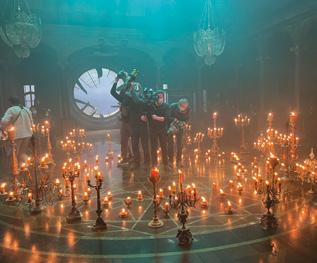
With the amount of VFX in the film… it had to be digital
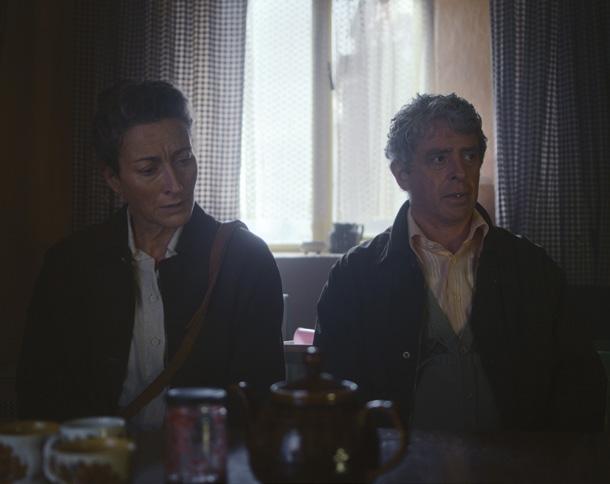

PURE AND SIMPLE
By Darek Kuźma
Director Colm Bairéad’s Berlin Awardwinning debut feature An Cailín Ciúin, or The Quiet Girl, is another remarkablyIrish story in cinematographer Kate McCullough ISC’s increasingly diverse oeuvre.
Rural Ireland, 1981. Nine-year-old Cáit is lying motionlessly in a field, listening to the sounds of nature, cloaked by the tall grass from the harsh reality of her dysfunctional family. When she has to return to her house, we realise why she craves solitude. Unloved by her parents, neglected by her siblings, ridiculed by her school peers, the vulnerable girl is desperately trying to find her way into the world. It all changes when Cáit is sent for the summer to her mother’s wealthier cousins Eibhlín and Seán. There, properly taken care of, and under the camera’s watchful eye, she begins to flourish and reveal her inner beauty.
Developed under the Cine4 scheme dedicated to promoting the Irish language, this low-budget adaptation of Claire Keegan’s short story, Foster, is as independent as it gets these days. And it benefited from the cinematic finesse of a native Irish cinematographer Kate McCullough whose work is celebrated around the world, including EnergaCAMERIMAGE Festival nods in feature debuts, documentary and TV series’ competitions.
“I had read Foster years ago. It’s a simple tale but with much depth to it,” says McCullough. “I liked its economy of language and astute observations of people. It was absolutely my cup of tea. When Colm emailed me, I couldn’t say no.”
McCullough had not met Bairéad before, and was nervous about doing justice to the story she cherished, but the director won her over with his script for An Cailín Ciúin. The first time they talked was in-person, but then they were soon forced by the pandemic to do the prep via Zoom.
“Fortunately, after the first lockdown we were able to resume meetings, having lunch or whatever, and the summer was beautiful that year which allowed us to work outside. It was a new way of working, maybe even more efficient than before. When we started filming, in September 2020, we were one of the first features to get going under Covid regulations in Ireland.”
One of the first decisions they made was to shoot the film in 1.37:1 aspect ratio.
“In a sense, the story of Cáit and how she discovers complexities of love and loss is a portrait piece. It seemed to us that the narrow, 1.37:1 ratio would suit the character’s growth. There’s power in not knowing what’s beyond the edge of the frame. It’s somehow suggestive of Cáit’s naivety, a world lying outside the frame yet to be explored or even understood,” explains McCullough.
“I hadn’t shot that narrow before and wondered whether I was going to feel limited, but it was actually the other way around – I felt invigorated as I had to commit to the frame more than usual. I also talked with Colm about opening-up the frame as Cáit blooms, sort of like in Xavier Dolan’s Mommy, but in this case it felt gimmicky.”
Another crucial decision was to limit the camera’s movement so as to focus the audience on Cáit‘s evolution from a bed-wetting, excruciatingly timid child, to a curious young girl capable of love and being loved.
“We were going for an observational approach and agreed to move the camera only if it felt really necessary,” says McCullough. “We’d rather focus on detailing her life on the new farm, allowing head room to emphasise that she still has to grow. When the movement appears, it stems from the performances, and puts an emphasis on what happens in the still moments surrounding it. Any motion of the camera is rooted in the essence of a given scene, in its energy.”
With fixed, but carefully-composed 1,37:1 shots, ordinary activities, such as preparing a warm bath or catching raindrops, evolve into visual poetry that complement the story, giving An Cailín Ciúin a sort of sensory dimension. “The character is subtle in a powerful way, so it was about allowing her to kind of breathe on screen, or showing what limits her from being free,” says McCullough. “With this ratio you end up with a more pronounced central focal point, so it was easier to frame objects and details. You feel more confined in Cáit father’s car when he drives her to the farm. The silence of adults around a table feels more awkward because there’s less space to escape to.” After establishing the cinematographic style with Bairéad, McCullough had to choose a combo of camera and lenses that felt right for the project. Despite working with ARRI cameras for most of her career, she decided on Sony Venice. “I’d shot a documentary at night during the lockdown with the Sony Venice and I was blown away by the power of its sensor. Here, we had a small budget and a number of scenes that needed working with low
light, including a night scene at the beach where
Cáit has an honest conversation with Seán by the pale moonlight. I was certain Sony Venice was the right way to go. I actually didn’t test any other camera.” It was a bit more problematic with lenses, however. “I tested Zeiss CP.3 Primes and ARRI Master Primes and could only afford the former if we wanted to shoot Full Frame. I wanted to see what the difference was between S35 and the full frame sensor but it was immediately apparent to me that Full Frame was the way to go for this film. And so we went with the CP.3s. And I have to say, I didn’t regret it for a moment,” muses McCullough.
“When I put Tiffen’s Black Pro-Mist filter in, it took the edge off them and they gave a really nice look, with a beautiful, warm flair. The 35mm was our workhorse lens and I matched CP.3s with the Angénieux 22-60mm and 45-120mm zooms for a couple of in-camera zooms, and that was it.”
McCullough says that because of her documentary background she prefers simplicity on sets and was grateful for shooting the entirety of An Cailín Ciúin on location.
“It would’ve taken a lot of resources and money to make those houses believable on stage, and besides, many farmers still live on such farms just as they lived in 1980s. We worked in Meath County, an hour away from Dublin, and shot our two houses on three separate farms as our main location didn’t have the right livestock on it,” reminisces McCullough. “It was sort of a time capsule for me. I grew up on a farm in the countryside, so a lot of it I recognised from my own experience.”
Working in scenic locations for 25 days in September and October 2020, she tried to minimise her lighting equipment.
“For day exteriors, I only used bounce and negative fill, maybe a lamp once or twice to match a shot we had sun for. In Ireland the weather changes every five minutes, we actually get four seasons in one day,” laughs McCullough. “I love shooting in early autumn, as you get access to dusk and dawn within the regular shooting day and the light is a bit softer and kind to the human skin.”
The only exception was the mentioned beach scene, although still she did not use many light sources. As she explains, “We rigged two small 6K spring ball lamps to use with Sony Venice. I wanted to make the characters as visible as possible without losing the natural beauty of the darkness that envelops them.”
Shooting on location also modified the way McCullough envisaged lighting both farm interiors.
“The house Cáit comes from has deep walls, so naturally light doesn’t get into the rooms. I only used two 4K Pars, as I could not get more than one Par in one window. Though it was enough to adjust it to our needs and not lose the location’s character,” says McCullough.
“The second farm is more airy, lots of windows through which you can see the landscape and trees catching the wind. It gives you this transient feel. I had one 12K Fresnel, two 4Ks and two 1.8Ks, and a couple of Lite Panels. The rest was trying to control the available light with mirrors, etc. As difficult as it always is with the unpredictable Irish weather.”
“As a rule, I only do as much as I need to do to bring the image to life, both equipment-wise and crew-wise. I like a quiet set based on trust,” admits the cinematographer who worked with two LUTs – one for day and one for night – developed with colourist Garry Curran from Outer Limits.
“I didn’t want to betray the story or the characters. This film is about the unsaid, the emotionally unspeakable. Little is spoken by these characters, so when they do speak it’s when they no longer can hold a thought or emotion inside. The camera has to be always ready to register these subtleties on screen. I think that’s the beauty of this film.”
An Cailín Ciúin is just that, one of those exceptional films during which you can laugh, and cry, and be angry, and get hopeful, and experience a range of emotions without ever feeling overwhelmed by what you watch. A true independent gem.

